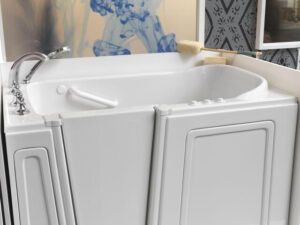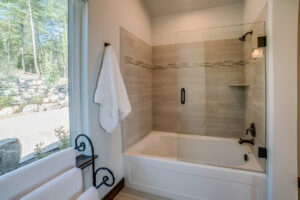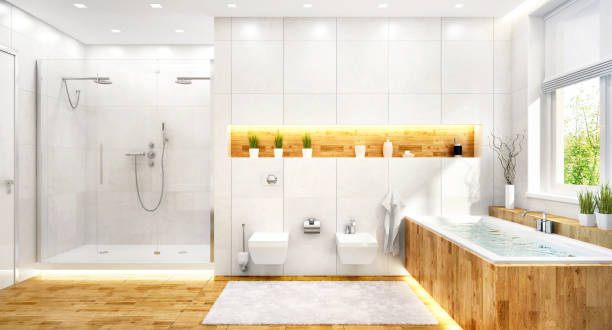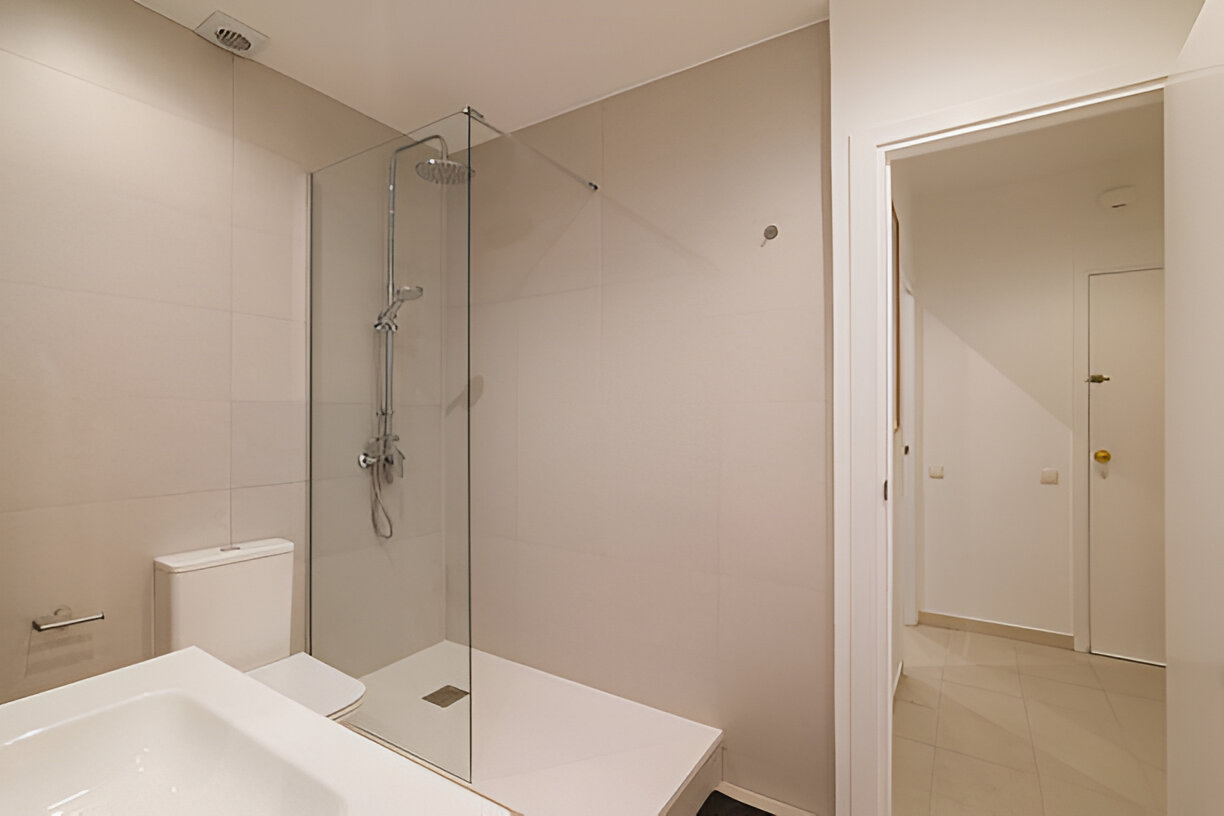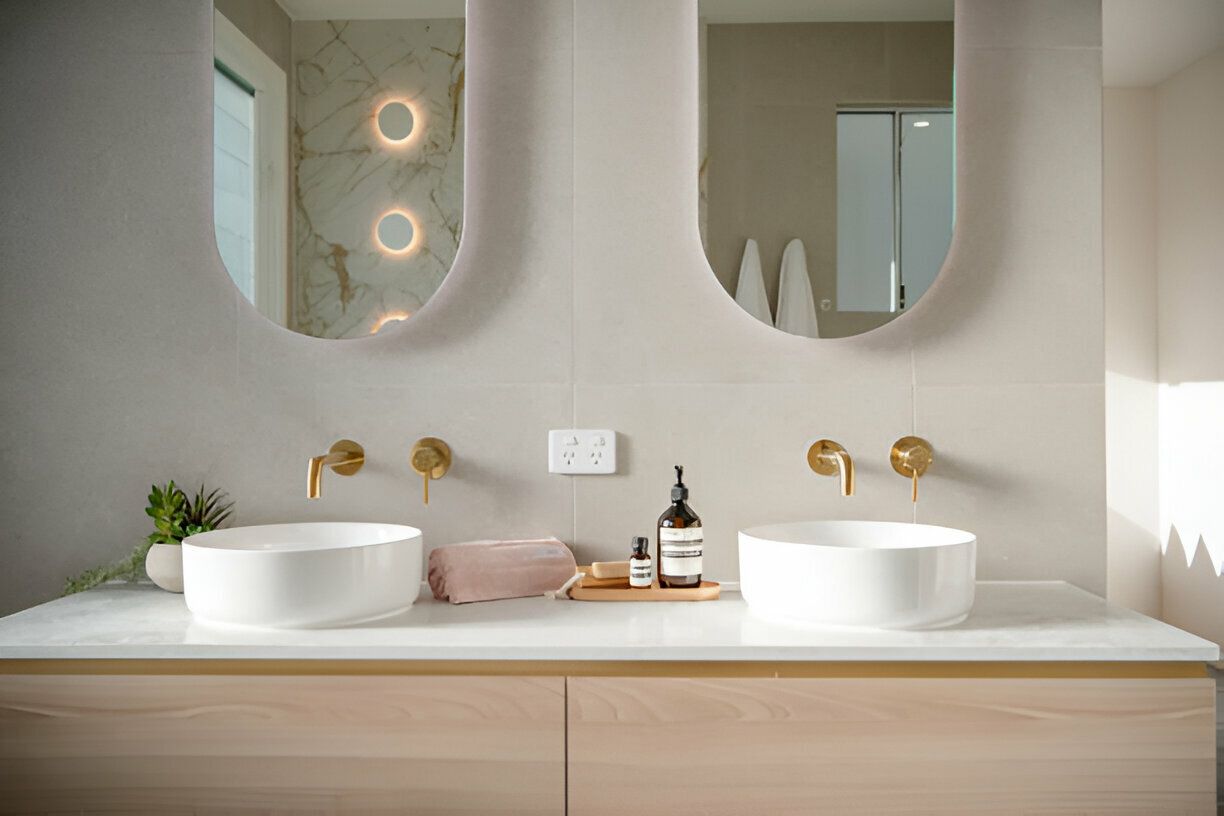Convenience, accessibility, and safety are the aspects that set walk-in tubs apart from traditional ones. It is designed to accommodate elderly people or those with limited mobility. This type of tub allows for an easy step into and out of the bath tub. If you have an existing tub and want to upgrade to a walk-in tub or shower, your regular tub can be converted instead of replacing it entirely.
Why Upgrade to a Walk-in Tub
What differentiates a walk-in tub from a traditional bathtub is its safety accessories. A walk-in tub is specially designed to allow easy entry and exit through a low-threshold door with one easy step. Unlike traditional bathtubs, walk-in tubs are built with features such as a built-in seat, grab bars, and anti-slip surfaces on the floor to enhance safety and comfort. They often come with options for water jets, extendable shower wands, and handheld showerheads, making them a perfect choice for people with physical conditions or mobility issues. These modifications can enhance independence, allowing individuals secure access to bathing without assistance and reducing the risk of slips and falls.
Can You Convert Your Existing Bathtub to a Walk-in Shower?
The short answer is yes, it’s possible to convert regular bathtubs into a walk-in bathtub with shower. However, whether it’s the right choice depends on several factors. You need to consider your existing bathroom layout, quality of installation materials, and budget, and weigh them against your need for bathroom accessibility and safety. The conversion process usually involves retrofitting a door into your current bathtub or replacing the entire tub with a walk-in model. Keep in mind, though, that not all bathroom tubs can be easily converted or installed. In some cases, purchasing a new walk-in tub or walk in shower may be more practical.
How to Convert Your Existing Tub to a Walk-in Bathtub
Converting a regular bathtub to a walk-in tub involves several modifications. You can’t simply cut a door into the side of a traditional bathtub and call it a day. The process requires careful planning and execution to ensure the tub is both functional and safe. Let’s look at the steps you need to take for the conversion to be successful.
- Remove the existing tub. The first step is to remove the current bathtub, which may involve cutting away sections of tile or wall , removing caulk, and carefully detaching the tub from its plumbing connections.
- Adjust the plumbing. Depending on the type of tub you’re installing, some plumbing modifications may be needed before installation is complete. These tubs typically need a faster drain system, which might require you to upgrade your drainage infrastructure.
- Install the walk-in bathtub. Once the old tub is out, the new tub or retrofit kit can be installed in your bathroom. This step involves ensuring the tub fits properly in the existing space, sealing it to prevent leaks, and connecting it to the plumbing once installed. While you’re at it, you might also want to convert your bath to a walk-in shower for optional bathing.
- Retrofit walk-in tub options. If you prefer to avoid a complete tub replacement as to reduce the installation time and cost,there are retrofit kits that can convert a standard tub into an easy step walk-in option. You can opt to cut out the side of your existing bathtub wall and install a watertight door for easy access. Whether your bathtub is made of fiberglass, acrylic, steel, or cast iron, there are retrofit options designed to fit various materials.
How Much Does it Cost to Convert a Bathtub to a Walk-in Tub?
The cost of converting a bathtub into a walk-in tub can vary significantly depending on the scope of the project. Replacing your existing tub with a new walk-in tub can cost more than converting your regular tub. Purpose-built walk-in tubs can cost thousands of dollars while retrofit kits are more affordable. You also need to factor in the installation fee (which goes in proportion to the complexity of the project), the permits required for house plumbing modifications, and other unforeseen structural issues.

